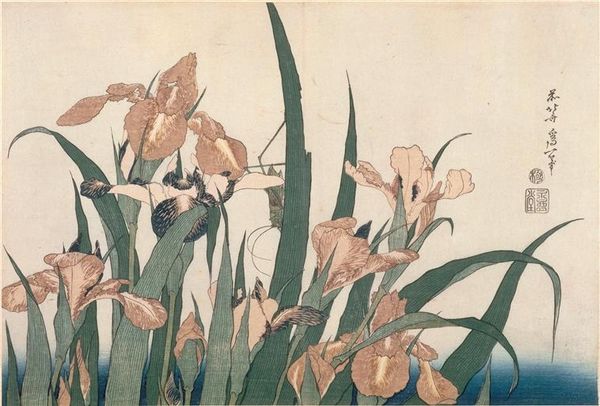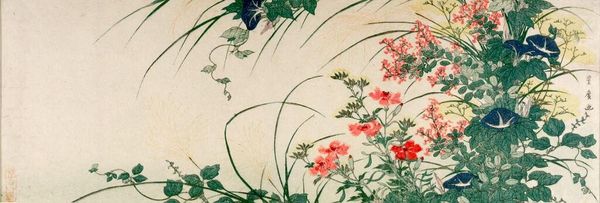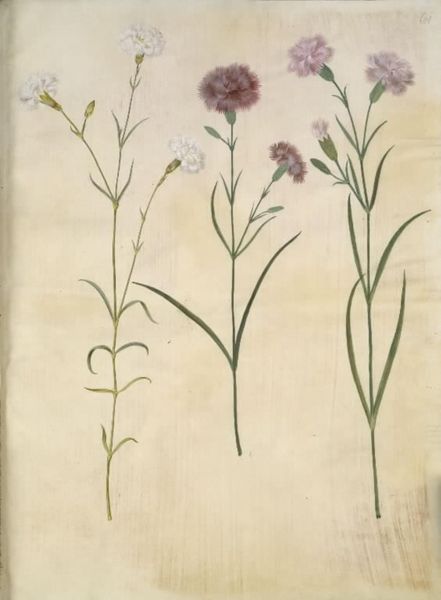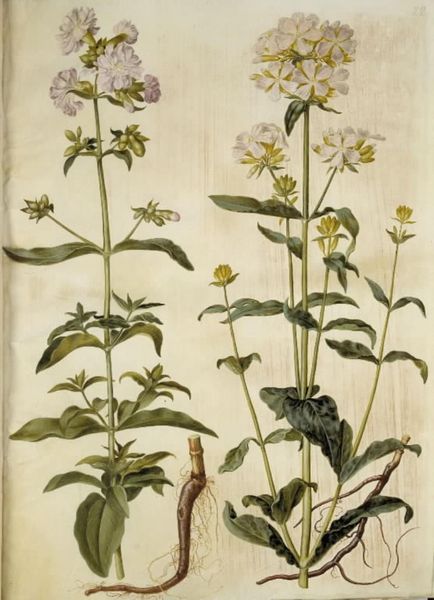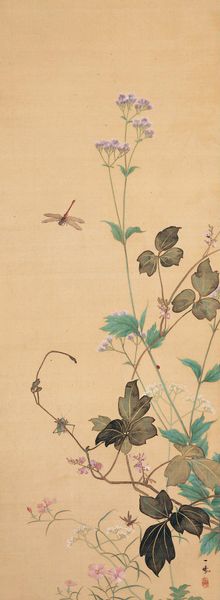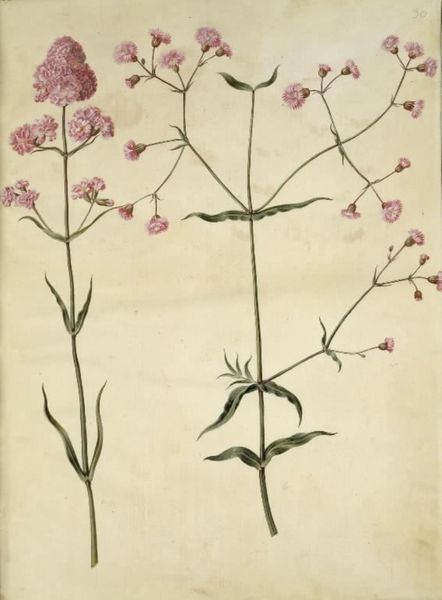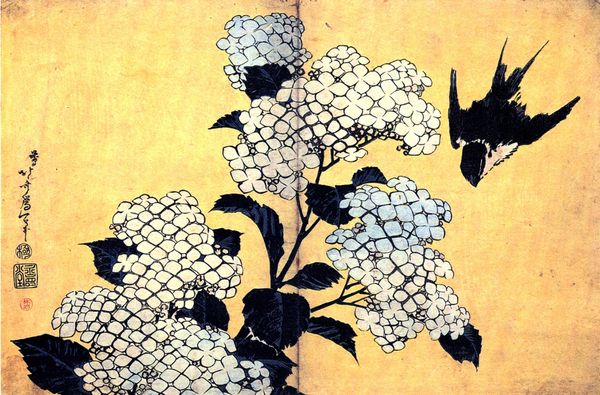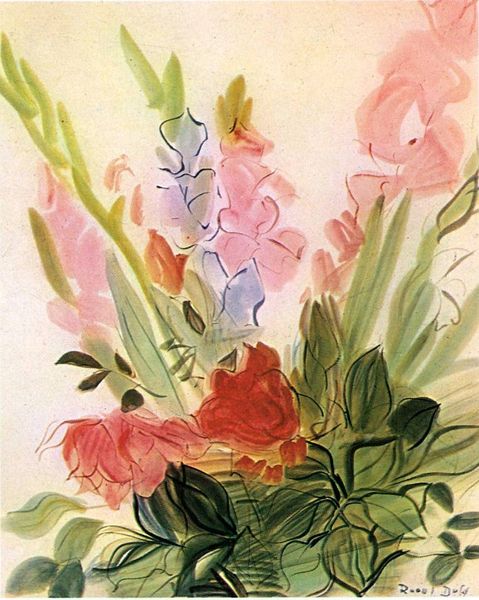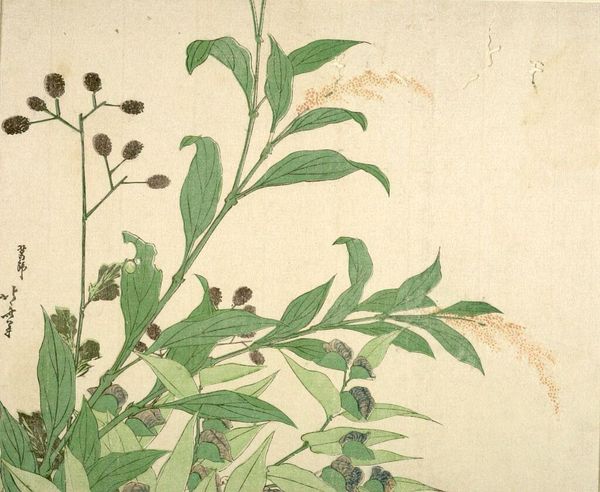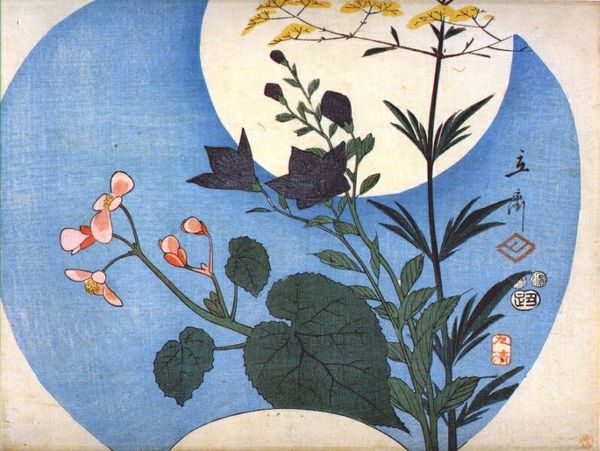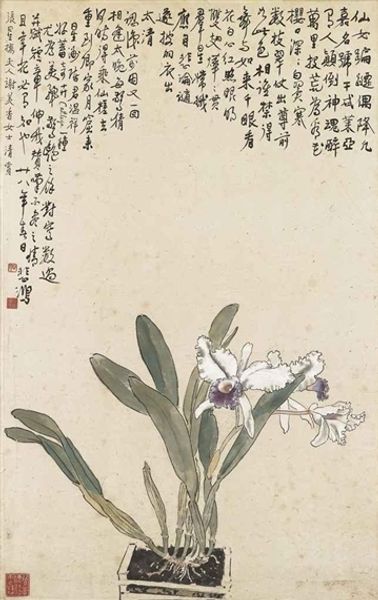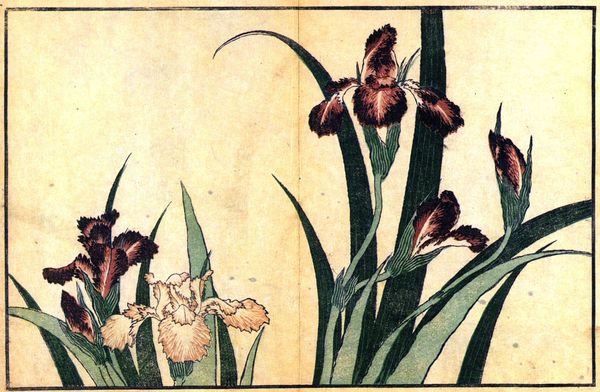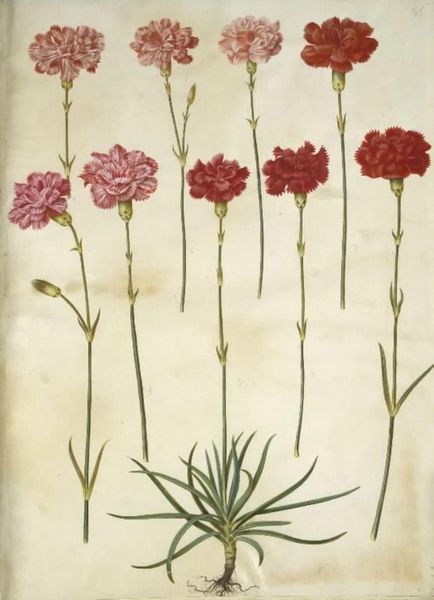
painting, watercolor
#
painting
#
asian-art
#
ukiyo-e
#
watercolor
Copyright: Public domain
Editor: Here we have Kitagawa Utamaro's "Rice Locust, Red Dragonfly, Pinks, Chinese Bell Flowers," created around 1788 using watercolor. There’s something both delicate and a bit unsettling about the insect looming over the blooms. What strikes you most about it? Curator: It’s a powerful illustration of the relationship between humans and nature, made tangible through material choices. Watercolor, inherently ephemeral, contrasts sharply with the sharp lines of the woodblock prints that were so prominent in ukiyo-e culture, which is challenging its existing hierarchical structure. The artist isn't simply depicting; they're employing a certain process, bringing together materials in a conscious way. The locust becomes more than an insect. Instead it’s representative of agriculture and consumption. What do you make of the print’s overt appeal to commercial markets through a traditional genre? Editor: So, it's less about just looking at the subject matter, and more about understanding how its made, and how that intersects with economics. So the artist is very deliberately making use of watercolor rather than traditional woodblock printing to… what, disrupt that traditional method of consumption of Japanese prints? Curator: Precisely. Utamaro, though working within ukiyo-e traditions, strategically chose methods that played with notions of value, accessibility, and artistic creation. Considering the painstaking labour in creating even a "simple" print such as this, how might it reflect contemporary labour and value? Editor: So the beauty of nature and artistic representation both connect back to the concrete realities of labor and marketplace…I hadn't really considered that at all. Curator: Materiality directs us towards understanding labor. Paying attention to what materials comprise an artwork and what labor went into its manufacture can reveal so much. Editor: I guess I'll never look at a watercolor of flowers quite the same way again! Thank you!
Comments
No comments
Be the first to comment and join the conversation on the ultimate creative platform.

